Building a greenhouse opens up possibilities to grow plants that normally wouldn’t survive outside due to the changing seasons.
But where do you even begin?
From the materials to the best location, it can seem like a daunting project. But if you plan accordingly, a greenhouse offers numerous benefits.
In this article, we help you get started with 9 things to consider when building a greenhouse.
What to Know Before Building a Greenhouse
Greenhouses are becoming a popular way to garden, primarily because it’s much easier to maintain than an outdoor garden. These enclosed structures provide a warmer climate for plants to thrive, extending the growing season when the cooler months arrive.
That’s because you have more control over important factors, such as the climate, moisture, and temperature inside the greenhouse. It also protects from pests, allowing your favorite plants to thrive without the fear of your hard work going to waste.
You can also grow all sorts of plants inside a greenhouse, including flowers, fruits, vegetables, and herbs. Best of all, you can build your greenhouse without calling in professionals, but the conditions must be right.
That’s why it’s crucial to sit down and make a solid plan before breaking out the shovel. We’ve listed the most important tips for building a greenhouse so that you can feel confident in your gardening success. Here’s what to consider when building a greenhouse:
1. Your Goals
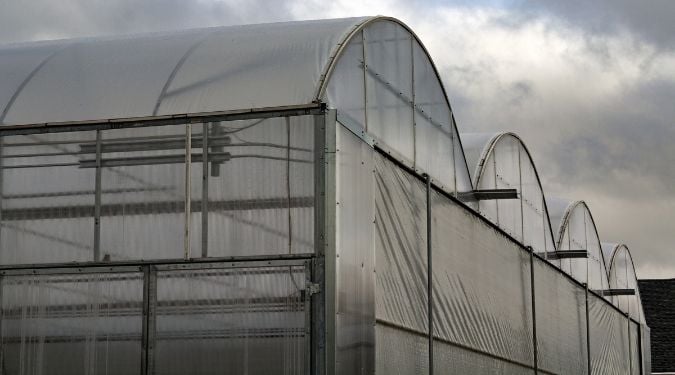
There are many reasons why gardeners decide to build greenhouses. You’ll want first to establish your objective, which will serve as the base for your design.
These are the most popular reasons for building a greenhouse:
2. The Best Place to Put a Greenhouse
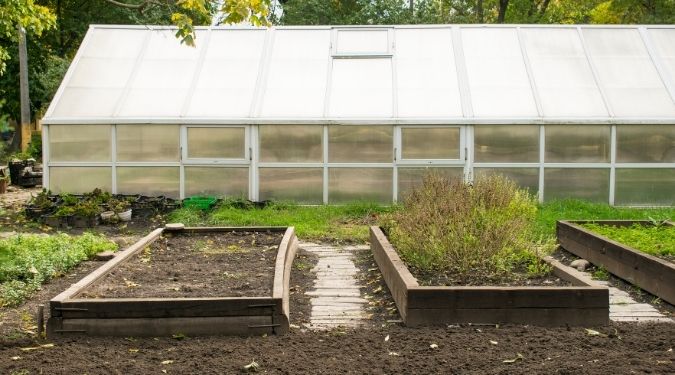
Take a moment to walk around outside your home and observe the areas that receive the most sunlight.
This might be the south or southeast side of your property or the east side—generally where there’s ample sunlight during the winter months.
By planning to build your greenhouse lengthwise from north to south, you position the structure to let in more light instead of shade.
If summers get hot where you live, it may benefit your plants if the greenhouse is situated near deciduous trees, which provide shade from the sun during summer but will lose their leaves during winter to give your unobstructed greenhouse sunlight.
Choose a flat, level area that drains well. Avoid the base of an elevated area, as frost tends to form here due to trapped cold air.
3. The Size of the Greenhouse
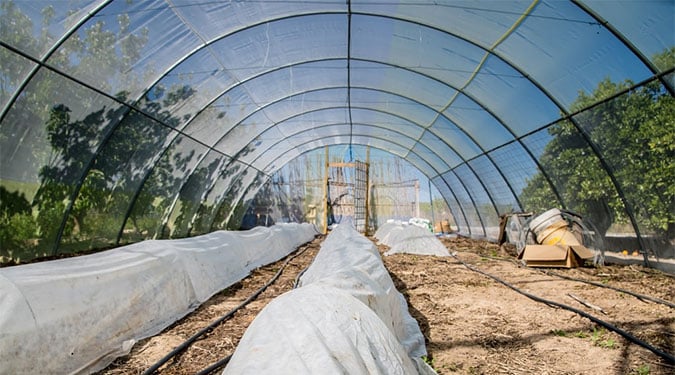
There is no hard rule regarding the size of a greenhouse, but keep in mind that the more space your plants have to grow, the more fruit, flowers, and veggies they’ll provide.
Therefore, you can build your greenhouse as large as you want and as your budget allows.
One important consideration is making sure the walls are not shorter than the structure is wide. You want to have long windows to allow ample sunlight to reach inside.
4. The Type of Greenhouse You Want to Build
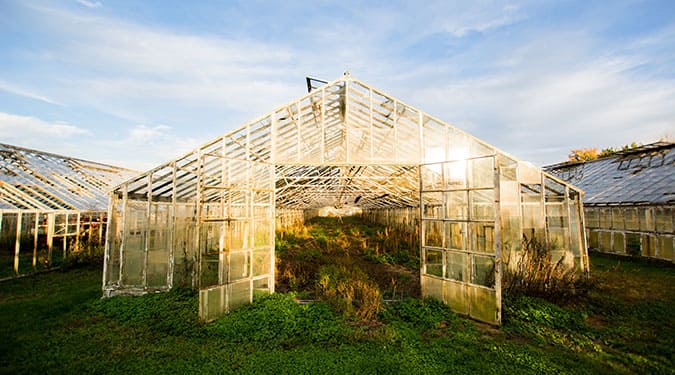
There are four primary types of greenhouse designs, each with its own set of special characteristics and benefits.
Freestanding
A freestanding greenhouse is the most flexible in terms of style, size, and positioning. It’s also expandable, so you can do so easily if you decide to upgrade your greenhouse.
There are some drawbacks to this type of style, mainly that freestanding greenhouses experience a higher rate of heat loss than attached greenhouses because all four sides of the building are exposed to the elements.
Depending on where you live, you might also have to finagle a way to bring power and water to the structure, which may entail extra labor such as digging a ditch or pulling an extension cord outside for electricity.
Attached
Attached greenhouses are built alongside your home, sharing a wall and power supply.
This makes it convenient to step inside your greenhouse without venturing out into the cold, and the building costs might be less since one wall doesn’t have to be constructed.
The only thing you’ll have to watch out for is the ventilation. A faulty door can let in humidity or pests. A sliding glass door is the best way to prevent these issues.
Tabletop Greenhouse
If you’re a casual gardener or live in an urban area, a tabletop greenhouse is a mini indoor version of a large walk-in greenhouse.
Glass, metal, steel, or plastic can be used to construct an easy mini-greenhouse, perfect for growing a decorative terrarium with figurines or growing herbs in your kitchen.
Greenhouse Windows
A greenhouse window or garden window is simply a window in your home that projects outwards to accommodate a small number of plants. There is glass on every side to receive as much sunlight as possible.
This is an ideal option if you don’t have a lot of outdoor space or you’re on a tight budget.
5. The Best Materials to Build Your Greenhouse

So what do you need to build a greenhouse? The key here is to choose the material that will allow sunlight to pass through easily.
There are plenty of materials to consider, with wood, aluminum, and plastic being the most common.
Wood Frames
Wood frames have been used for years due to heat efficiency and the ability to add fixtures, such as hanging hooks, light fixtures, and shelves.
But wood must be pressure-treated to withstand rot and pests, such as termites.
There is controversy regarding whether the chemicals used to treat wood framing leach into the soil and affect the plants, in which case aluminum might be a better choice.
Aluminum Frames
Aluminum is the most durable framing material, but it’s not eco-friendly since it takes a lot of energy to make it, and the mining process is destructive.
It’s also not the best insulator and can lead to heat loss.
Galvanized Steel Frames
Galvanized steel framing is ideal since it’s low maintenance, rust-proof, and less expensive than aluminum and wood.
The drawback with steel is that it can’t be shaped like aluminum, and it is much heavier to maneuver compared to wood and aluminum.
Plastic Sheets & Rolls
While traditional glass sheets are heavy and fragile, greenhouse plastic sheets are convenient, flexible, and specially designed to withstand harsh weather conditions. It also protects plants from UV rays.
Plastic can be cut to fit over doors, windows, and walls and can be cut easily without the help of a professional.
Here are four different types of plastics for greenhouse construction:
6. Pathways

Oftentimes, greenhouse access is overlooked, but it is an integral part of the construction. Imagine walking to your greenhouse in the dark and not being able to see what you’re stepping on or trying to finagle a wheelbarrow around your plants.
The good news is, greenhouse pathways are as easy to construct as a typical garden pathway. You can use any type of material, including mulch, pavers, or gravel.
Just make sure the pathways are even so that you don’t stumble. Solar path lights are a simple, eco-friendly way to light up your route.
7. Controlling Humidity & Temperature
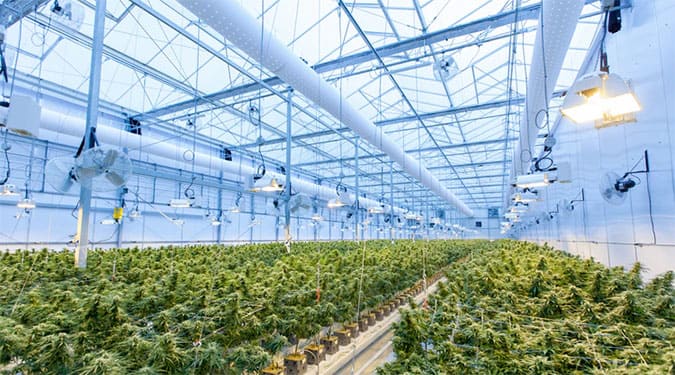
The climate inside your greenhouse needs to be just right to ensure that your plants receive just enough heat and moisture to grow and thrive, boosting crop production and even resulting in tastier fruits and veggies.
High humidity levels can make an environment too wet, making plants more susceptible to mold and fungus.
Managing the climate inside your greenhouse can be tricky, but the key is to ensure that the temperature is evenly distributed to prevent microclimates from forming.
So how can you control the climate inside your greenhouse? The truth is, there isn’t a one-size-fits-all solution.
This will depend largely on where you live. If you live in a tropical environment, you’ll be dealing with higher humidity levels, while the opposite is true if you live in a cold, dry region.
There are plenty of tactics to help balance out the temperature in your greenhouse. You’ll have to pick your methods according to your climate observations.
8. Watering System

Every gardener knows that regular watering is essential for optimal plant growth. The easiest way to do this is by simply using a hose to manually water your greenhouse garden regularly.
If you have a large garden and little time, then you might want to consider installing a watering system to sprinkle water on your plants automatically, saving time.
9. Permits
Before you get started with your build, check out the local laws and regulations concerning a greenhouse on your property. There may be permits you must acquire to go through with the project.
Once again, this depends on where you live, as some towns may require a permit while rural areas may not require anything at all.
Final Thoughts on Things to Consider When Building a Greenhouse
You might have a picture-perfect vision of an adorable greenhouse perched on your property, bursting with the biggest, brightest blooms you’ve ever seen.
But before you can make your dream a reality, there are many things to consider when building a greenhouse. With proper planning, you can make it a smooth and cost-effective process.
References & Resources:
- 28 DIY Greenhouses That Are Cheap and Easy to Build, Country Living.
- Best Greenhouse Plants: Good Plants To Grow In A Greenhouse, Gardening Know How.
- 45 Best Greenhouse Plants to Make the Most out of Your Space, Morning Chores.
- 5 Major Benefits of a Greenhouse, Shelter Logic.
- What to Plant in a Greenhouse: 10 Top Crops to Grow, Gardening Etc.